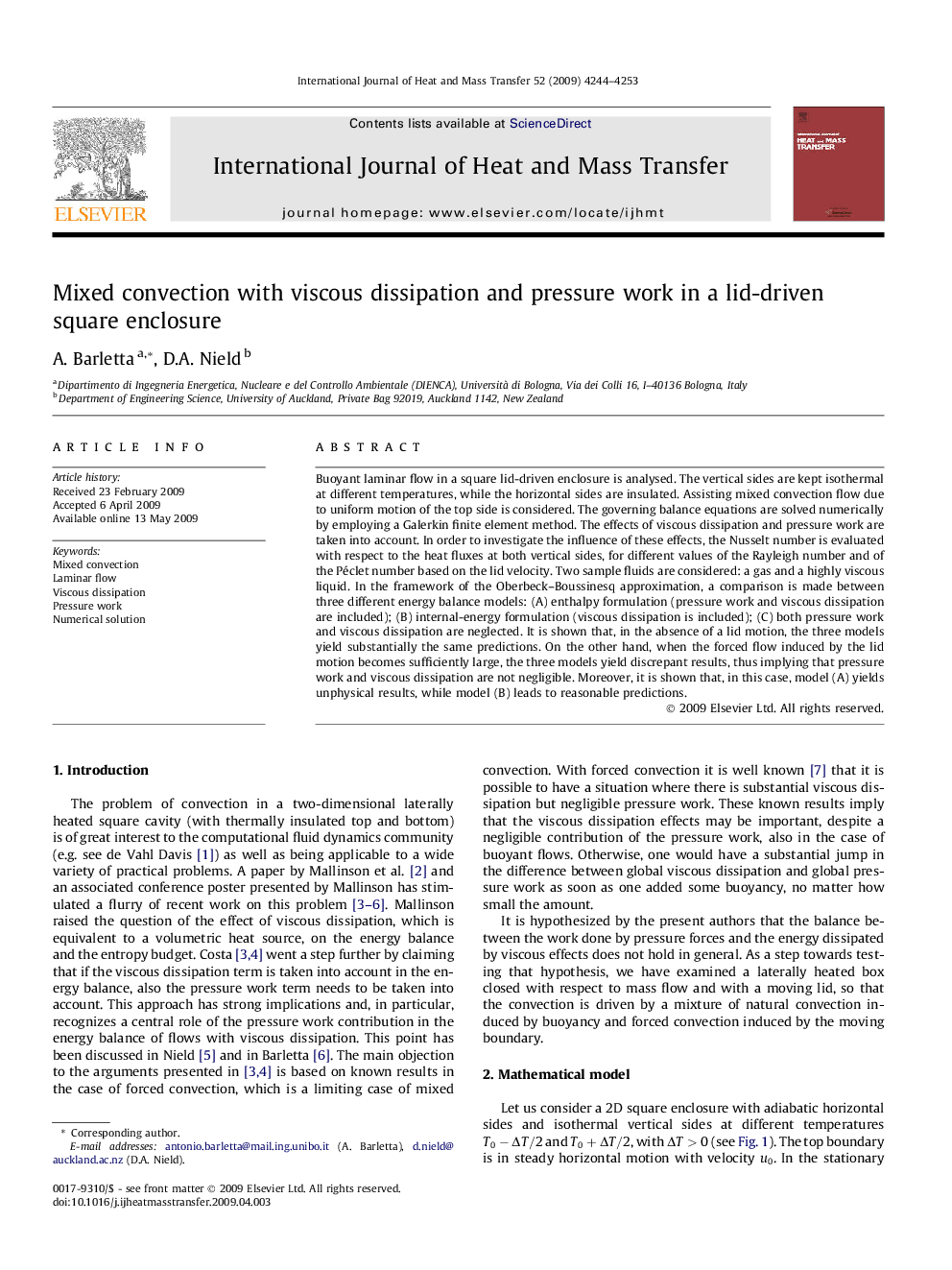| Article ID | Journal | Published Year | Pages | File Type |
|---|---|---|---|---|
| 661765 | International Journal of Heat and Mass Transfer | 2009 | 10 Pages |
Buoyant laminar flow in a square lid-driven enclosure is analysed. The vertical sides are kept isothermal at different temperatures, while the horizontal sides are insulated. Assisting mixed convection flow due to uniform motion of the top side is considered. The governing balance equations are solved numerically by employing a Galerkin finite element method. The effects of viscous dissipation and pressure work are taken into account. In order to investigate the influence of these effects, the Nusselt number is evaluated with respect to the heat fluxes at both vertical sides, for different values of the Rayleigh number and of the Péclet number based on the lid velocity. Two sample fluids are considered: a gas and a highly viscous liquid. In the framework of the Oberbeck–Boussinesq approximation, a comparison is made between three different energy balance models: (A) enthalpy formulation (pressure work and viscous dissipation are included); (B) internal-energy formulation (viscous dissipation is included); (C) both pressure work and viscous dissipation are neglected. It is shown that, in the absence of a lid motion, the three models yield substantially the same predictions. On the other hand, when the forced flow induced by the lid motion becomes sufficiently large, the three models yield discrepant results, thus implying that pressure work and viscous dissipation are not negligible. Moreover, it is shown that, in this case, model (A) yields unphysical results, while model (B) leads to reasonable predictions.
